As an Amazon Associate I earn from qualifying purchases.
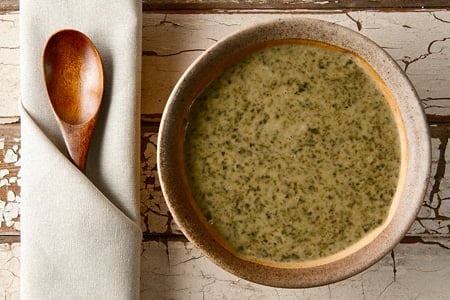
One of the first things I did when I moved to California was plant sorrel in my backyard. It is my kind of veggie: Tart, tender, drought-resistant, indestructible. Ignore it and sorrel thrives. Stomp on it and it comes back stronger. And it’s green almost all year long.
Sorrel soup is a classic. It is a harbinger of spring all over Europe, and several versions of it exist from Scotland to France to Russia.
Sorrel, like many early-spring greens, is a tonic after so many months of eating roots and preserved meats. It is very high in Vitamin C and reasonably high in iron. It’s tang — I call it “lemonade in a leaf” — comes from oxalic acid, the same thing that make its cousin rhubarb taste the way it does.
Sorrel is exceptional paired with seafood or chicken, and I often make a simple sorrel sauce whenever I have some trout or salmon or pheasant around.
Everything about sorrel soup sounded wonderful, save one: For whatever reason, sorrel turns olive green almost the second it touches the heat. Sorrel looks like overcooked collard greens even before it’s fully wilted. And I have a thing about overcooked greens, although I am trying to get over it. I want my greens to shine like emeralds, not look like the side of an Army truck.
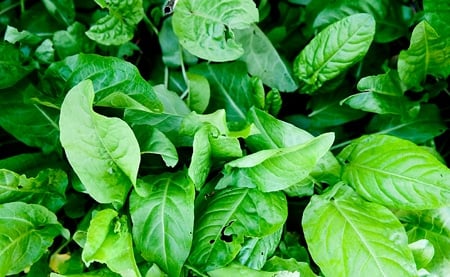
I stood in my yard, staring at my gigantic sorrel patch. Would another year pass without me making sorrel soup? I got out my scissors. No, I’d suck it up and deal with the drab.
You don’t have to garden to enjoy sorrel. I happen to grow the common garden sorrel that was developed in France centuries ago, but there are several wild sorrel species that live in North America.
Most common are the oxalis family, of which there are scores. Chief among this clan is creeping wood sorrel, Oxalis corniculata, which looks like shamrocks with little yellow flowers. It turns bronze in cold weather and often infiltrates your lawn. There is another sorrel that lives in the West Coast, Oxalis albicans. It too has shamrocks, only they’re larger and the yellow flowers are the color of saffron-and-cream. You see this sorrel a lot in the Bay Area.
In the woods you will find sheep sorrel, Rumex acetosella. It has tiny, arrow-shaped leaves and grows in a little rosette. Sheep sorrel can carpet the forest floor. My garden sorrel is a relative of this one.
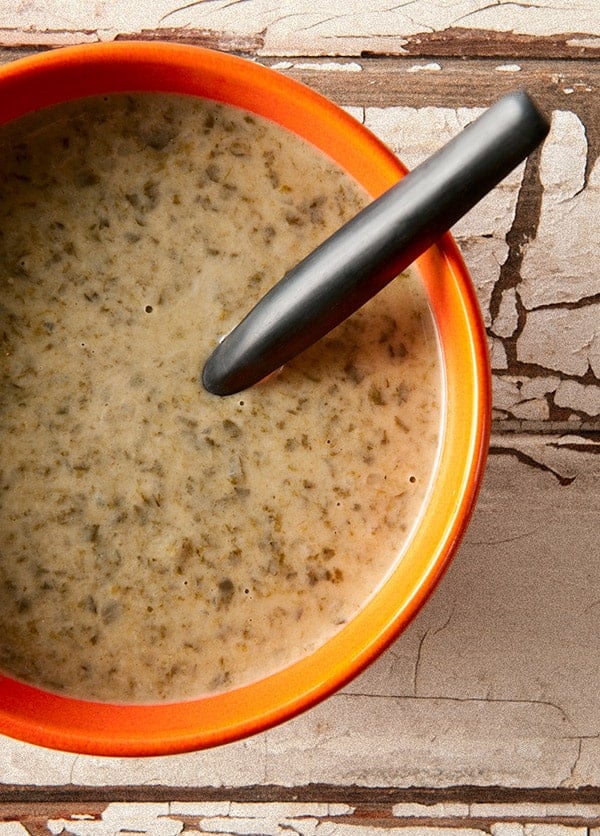
Since the French really pioneered the cultivation of sorrel, I decided to make my sorrel soup a French one. There are scores of recipes for this soup, but if you want to make a classic French dish you go to the classic French cookbook: Julia Child’s Mastering the Art of French Cooking. My version of this recipe differs from Julia’s only in that I used wild onions instead of regular onions, and I used more sorrel. Other than that, it is an homage to a master.
As you might expect from a vegetable whose chief attribute is tartness, this soup would be inedible without the cream and eggs to temper it. With them, however, it becomes a bright, smooth wake-up call from a long winter. All it needed for total balance was a good loaf of bread and a crisp white wine. Enjoy!
Sorrel Soup, French Style
Ingredients
- 4 tablespoons unsalted butter, divided
- 1/2 cup chopped green onions, ramps or other wild onion
- 4-6 cups of chopped sorrel, packed
- Salt
- 3 tablespoons flour
- 1 quart chicken stock or vegetable stock
- 2 egg yolks
- 1/2 cup cream
Instructions
- Melt 3 tablespoons butter in a soup pot over medium heat. Add the green onions or ramps and turn the heat to medium-low. Cover the pot and cook gently for 10 minutes.
- While the onions are cooking, pour the stock into another pot and bring to a simmer.
- Turn the heat up, add the sorrel leaves and a healthy pinch of salt to the pot with the onions and stir well. When the sorrel is mostly wilted, turn the heat back to medium-low, cover and cook 10 minutes. Stir occasionally. Mix in the flour and cook over medium heat for 3 minutes.
- Whisk in the hot stock, stirring constantly. Bring this to a simmer.
- To finish the soup, whisk together the egg yolks and cream. Temper the mixture by ladling a little soup into it with one hand, while you whisk the egg-cream mix with the other. Repeat this three times. (You are doing this to prevent the eggs from scrambling) Now start whisking the soup. Pour the hot egg-cream-soup mixture into the pot with the soup, whisking all the way. Add the final tablespoon of butter. Let this cook -- below a simmer -- for 5 minutes. Do not let it boil or the soup will break. Serve at once.
Notes
Nutrition
Nutrition information is automatically calculated, so should only be used as an approximation.
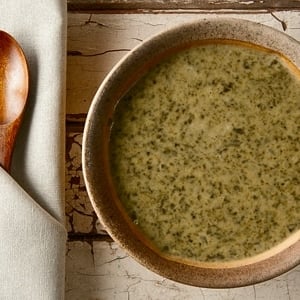
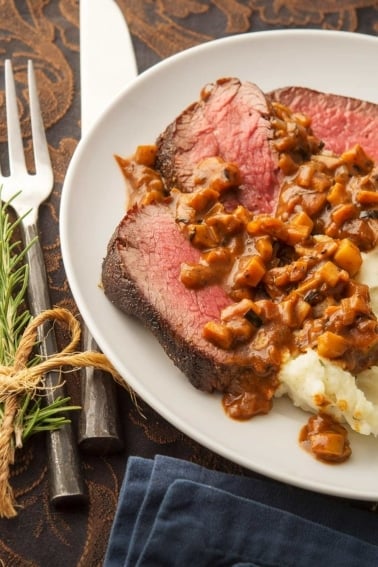
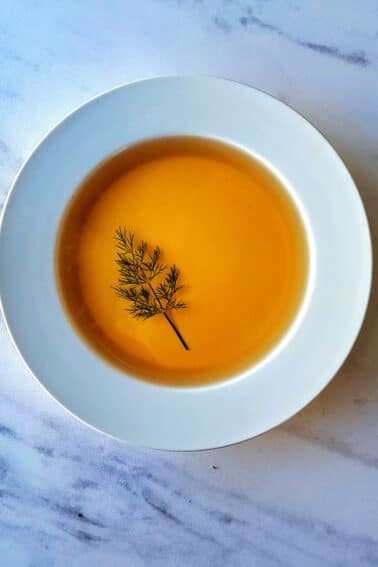
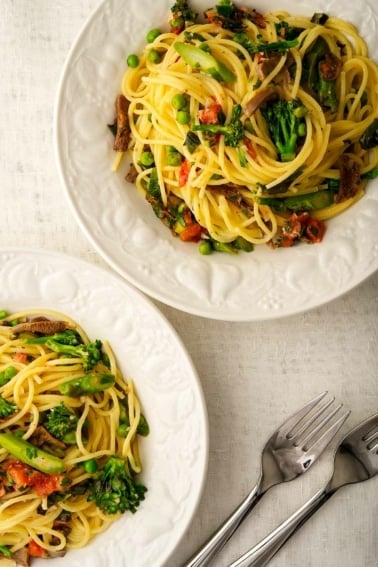
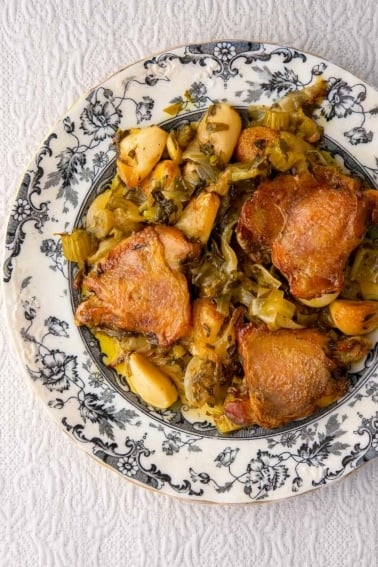
Hi,
I just made the sorrel soup for the first time as I had a heap in my garden. It tastes delicious but is has heaps of fibres. I used the whole leaf and stem. Is the hard fibre from the stem?
I searched online and it suggested to blend. I’d just like to know for next time.
Thanks so much for the recipe.
Amber: Yes, the fibers are from the stems. Blending is a good option.
Like you, I planted sorrel in my yard, but unlike you, I had no idea what to do with it. I’m an adventurous cook so I tried your recipe verbatim and it turned out very very good. I used techniques I had never used before like tempering the egg cream mixture before adding it to the soup. The soup didn’t break and I think it turned out exactly like it was supposed to. It was delicious and pretty easy to cook up. Thanks
This soup has been a family favourite for years. Thank you Hank! I’ve two points to make. The first is that you CAN freeze the soup and the thawed, warmed up soup will regain about 80% of it’s original smooth consistency, but only if you reheat it SLOWLY, and whisk it NON-STOP. The whisking during the slow reheating seems to rebind enough of the fat particles to make the soup passable, at least in my family. My second point is that I was curious whether a vegan, gluten-free version would work, so I tried making one using Hank’s recipe. I used Bob’s Red Mill Gluten Free 1 to 1 Baking Flour as the flour substitute and Bob’s Red Mill Egg Replacer Substitute to replace the egg yolks. Instead of butter, I sauteed the onions in Virgin, Cold-Pressed Olive Oil. The heavy cream was replaced by a mixture of 2/3 Oat Milk and 1/3 Olive Oil, mixed in the blender. I have guests who are vegan or dairy intolerant, and that’s what motivated me to try this. IT WORKS!!! And without dairy fat, there is the added bonus that you can freeze the soup. I typically triple this recipe whenever I make it (I have TONS of sorrel) and so most will go into the freezer. A few caveats: when adding the gluten-free flour to the wilted sorrel, whisk the mixture NON-STOP for the entire three minutes while the flour/sorrel mix is cooking. The egg replacement is for a whole egg, whereas the recipe calls for only the yoke. This did not create a problem. When adding the ladels of hot soup to the cream/egg mixture, whisk forcefully and constantly as the consistency is thicker than if you had used cream and eggs. Because of this, I would suggest adding five or six ladels of soup instead of just three. Finally, when the cream/egg mixture has been added back into the soup and stirred in, it is essential to finish the soup with an immersion blender to achieve a perfectly smooth soup. I taste-tested this version with my wife who adores this soup …. she couldn’t tell the difference between Hank’s version and this vegan gluten-free version. I hope this is helpful to those looking for a vegan, gluten-free version of Hank’s masterpiece. 🙂
How would you adjust the recipe please if you wanted to remove the oxalates? They contribute to kidney stones for those susceptible? Thank you!
Sandy: Sorry. Make another soup then. Sorrel is the main ingredient here, and cannot be substituted.
If you prefer it less olive colored I like to wash the sorrel leaves in “fruit fresh” or lemon juice in a bowl of water then add them to the soup just before you temper the eggs in. I purée the soup after to break down the sorrel a bit more. It tastes just as good and it stays less dark colored. Thanks for the recipe.
Also in France wild or spring onions are often used, so you are far ahead of the curve!
This was absolutely delicious! It was perfect as written. We inhaled it as is. We also garnished with flaky salt, Urfa chili, Maras pepper and dukkah. Over the top good. I am thinking of making a few batches and stopping before adding stock so that I can freeze the “base” and make it as written (with egg yolks and cream) all year long. Think that would work?
So good I made it twice in a week!
“This soup would be inedible without the cream and eggs to temper it” – lol, no. Coming from a country where it’s made without flour, cream, or eggs, I can assure you that it’s very edible. On hot days we drink it chilled, usually paired with roasted potatoes. Also, instead of cooking the onions, we just pick a sweet one, mince it, and add it on top like garnish. It makes the soup taste fresher and spicier.